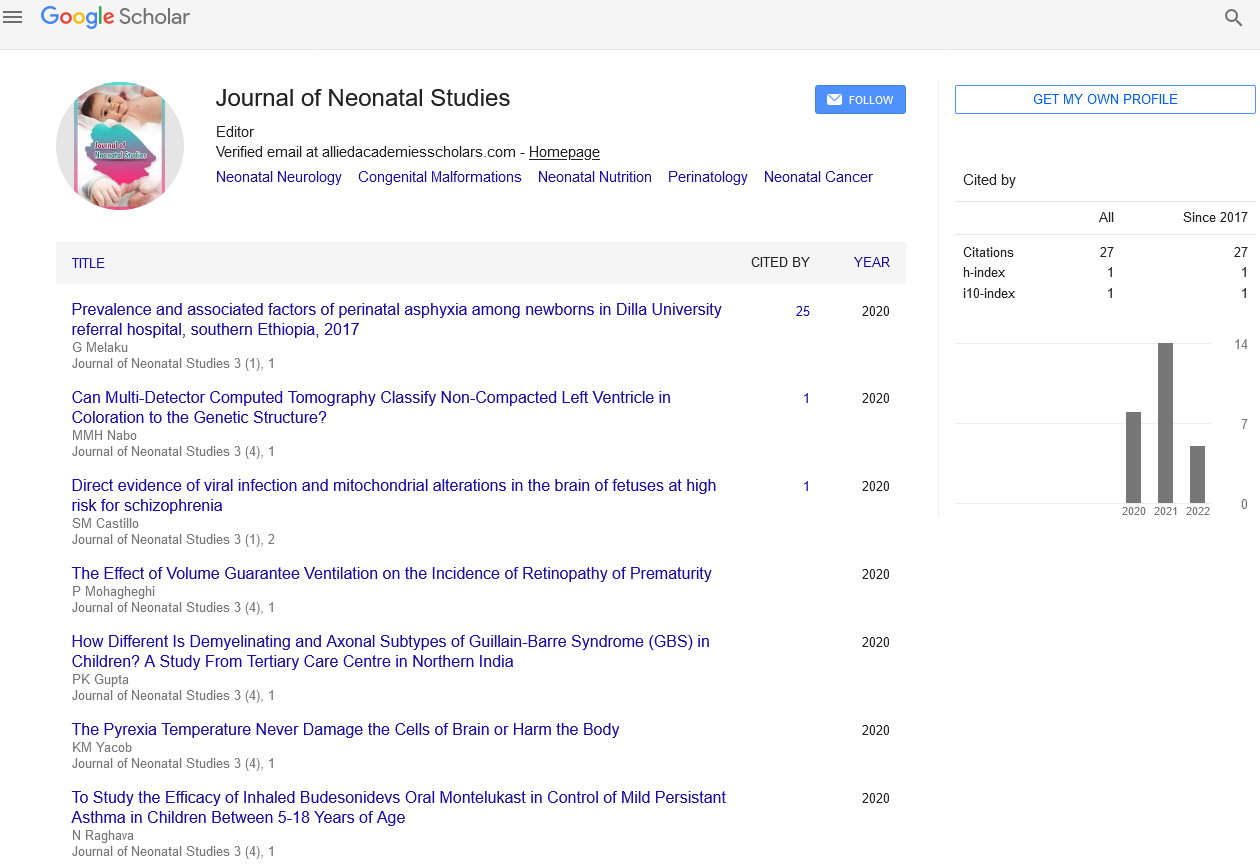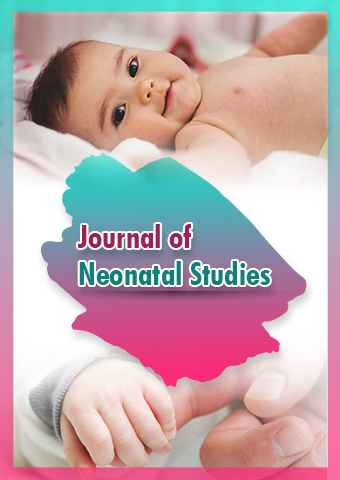Perspective - Journal of Neonatal Studies (2024) Volume 7, Issue 6
Car Seat Safety for Neonates: Ensuring Safety and A Comprehensive Guide
- Corresponding Author:
- Alejandro Jacinta
Department of Emergency Medicine, Universidad Peruana Cayetano Heredia, Peru
E-mail: Jacintaa@cayetano.edu
Received: 04-Nov-2024, Manuscript No. JNS-24-150538; Editor assigned: 06-Nov-2024, PreQC No. JNS-24-150538 (PQ); Reviewed: 20-Nov-2024, QC No. JNS-24-150538; Revised: 24-Dec-2024, Manuscript No. JNS-24-150538 (R); Published: 31-Dec-2024, DOI: 10.37532/JNS.2024.7(6).291-293
Introduction
Car seat safety is an essential aspect of neonatal care that ensures the well-being and protection of newborns during travel. Proper use of car seats significantly reduces the risk of injury or death in the event of a car accident. This article provides a comprehensive overview of car seat safety for neonates, covering the importance of car seats, types of car seats, installation guidelines, best practices, and common mistakes to avoid.
Description
Importance of car seat safety
Motor vehicle accidents are one of the leading causes of injury and death for infants and young children. Using a car seat correctly can reduce the risk of death by up to 71% for infants. Neonates, due to their delicate and developing bodies, are particularly vulnerable during car travel. Properly installed car seats provide the necessary support and protection, ensuring that newborns are safe and secure while traveling.
Types of car seats
There are several types of car seats available for newborns, each designed to cater to different stages of a child’s development. The primary types of car seats for neonates include:
Rear-facing infant car seat: Specifically designed for newborns and infants up to 2 years of age or until they reach the maximum weight and height limits specified by the manufacturer. Rearfacing seats provide optimal support for the baby’s head, neck, and spine.
Convertible car seat: Can be used both rear-facing for infants and forward-facing for older children. Convertible car seats are suitable for parents who prefer a single car seat that can be adjusted as the child grows.
All-in-one car seat: Designed to accommodate children from infancy through the toddler and preschool years. These car seats can be used as rear-facing seats, forward-facing seats, and eventually as booster seats.
Guidelines for selecting a car seat
Choosing the right car seat for a neonate involves several considerations:
Age, weight, and height limits: Select a car seat that fits the baby’s current size and has appropriate weight and height limits for future growth.
Safety features: Look for car seats with essential safety features such as a five-point harness, side-impact protection, and energy-absorbing foam.
Ease of installation: Ensure that the car seat is easy to install correctly. Many car seats come with features like latch systems and clear installation guides to simplify the process.
Compatibility: Verify that the car seat is compatible with your vehicle. Some car seats may fit better in certain car models than others.
Certification: Check that the car seat meets safety standards and regulations set by organizations such as the National Highway Traffic Safety Administration (NHTSA) or the American Academy of Pediatrics (AAP).
Installation guidelines
Correct installation of a car seat is crucial for ensuring the safety of a neonate. Follow these guidelines for proper installation:
Read the manual: Carefully read the car seat manual and the vehicle owner’s manual for specific instructions on installing the car seat.
Positioning: Always place the car seat in the back seat of the vehicle, as it is the safest location. The rear-facing position is mandatory for newborns and infants.
Angle: Ensure that the car seat is installed at the correct angle, typically between 30 to 45 degrees, to keep the baby’s head from falling forward and to maintain an open airway.
Secure installation: Use the vehicle’s seat belt or latch system to secure the car seat tightly. The car seat should not move more than an inch side to side or front to back when properly installed.
Harness straps: Adjust the harness straps to fit snugly against the baby’s body. The chest clip should be positioned at armpit level, and there should be no slack in the straps.
Best practices for car seat safety
To ensure the highest level of safety for neonates, follow these best practices:
Rear-facing duration: Keep the baby in a rear-facing car seat for as long as possible, until they reach the maximum weight or height limit specified by the car seat manufacturer. Rear-facing seats provide better protection for the baby’s head, neck, and spine in the event of a collision.
Regular inspections: Regularly inspect the car seat for wear and tear, and ensure that all components are in good working condition. Replace the car seat if it shows signs of damage or has been involved in a car accident.
Avoid second-hand car seats: It is generally recommended to avoid using second-hand car seats, as they may have unknown damage or may not meet current safety standards.
Travel without bulky clothing: Avoid dressing the baby in bulky clothing or blankets while in the car seat, as this can interfere with the proper fit of the harness straps. Instead, use a car seat cover or blanket over the straps to keep the baby warm.
Use car seat accessories carefully: Only use accessories and inserts that are approved by the car seat manufacturer. Unapproved accessories can compromise the safety and effectiveness of the car seat.
Education and training: Attend car seat safety workshops or seek assistance from certified car seat technicians to ensure proper installation and usage. Many local health departments, fire stations, and hospitals offer free car seat inspections and installations.
Common mistakes to avoid
To maximize the safety of neonates during car travel, avoid these common mistakes:
Incorrect installation: Improper installation of the car seat is one of the most common mistakes. Always follow the manufacturer’s instructions and seek professional help if needed.
Loose harness straps: Ensure that the harness straps are snug and properly adjusted. Loose straps can lead to increased movement and reduced protection during a collision.
Incorrect positioning: Avoid placing the car seat in the front seat or facing forward for infants. The back seat and rear-facing position are the safest for neonates.
Using expired car seats: Car seats have expiration dates due to wear and tear, material degradation, and changes in safety standards. Check the expiration date on the car seat and replace it when it reaches the end of its lifespan.
Skipping the manual: Failing to read the car seat manual can result in improper installation and usage. Each car seat has specific instructions and guidelines that must be followed.
Additional tips for car seat safety
Travel monitors: Consider using travel monitors designed for infants to ensure they are breathing properly and remain in a safe position during car rides.
Limit travel time: Minimize the duration of car trips for neonates, especially preterm or medically fragile infants, to reduce the risk of desaturation and discomfort.
Plan breaks: For longer car journeys, plan regular breaks to take the baby out of the car seat, allowing them to stretch and avoid prolonged periods in a semi-upright position.
Monitor temperature: Ensure that the car seat is not exposed to extreme temperatures. In hot weather, check that the seat is not too hot before placing the baby in it, and in cold weather, avoid using thick, bulky clothing that can interfere with the harness.
Stay informed: Keep up-to-date with the latest car seat safety guidelines and recommendations from reputable sources such as the American Academy of Pediatrics (AAP) and the National Highway Traffic Safety Administration (NHTSA).
Conclusion
Car seat safety is a critical aspect of neonatal care that ensures the protection and well-being of newborns during car travel. By selecting the appropriate car seat, following installation guidelines, adhering to best practices, and avoiding common mistakes, parents and caregivers can provide the highest level of safety for their infants.

